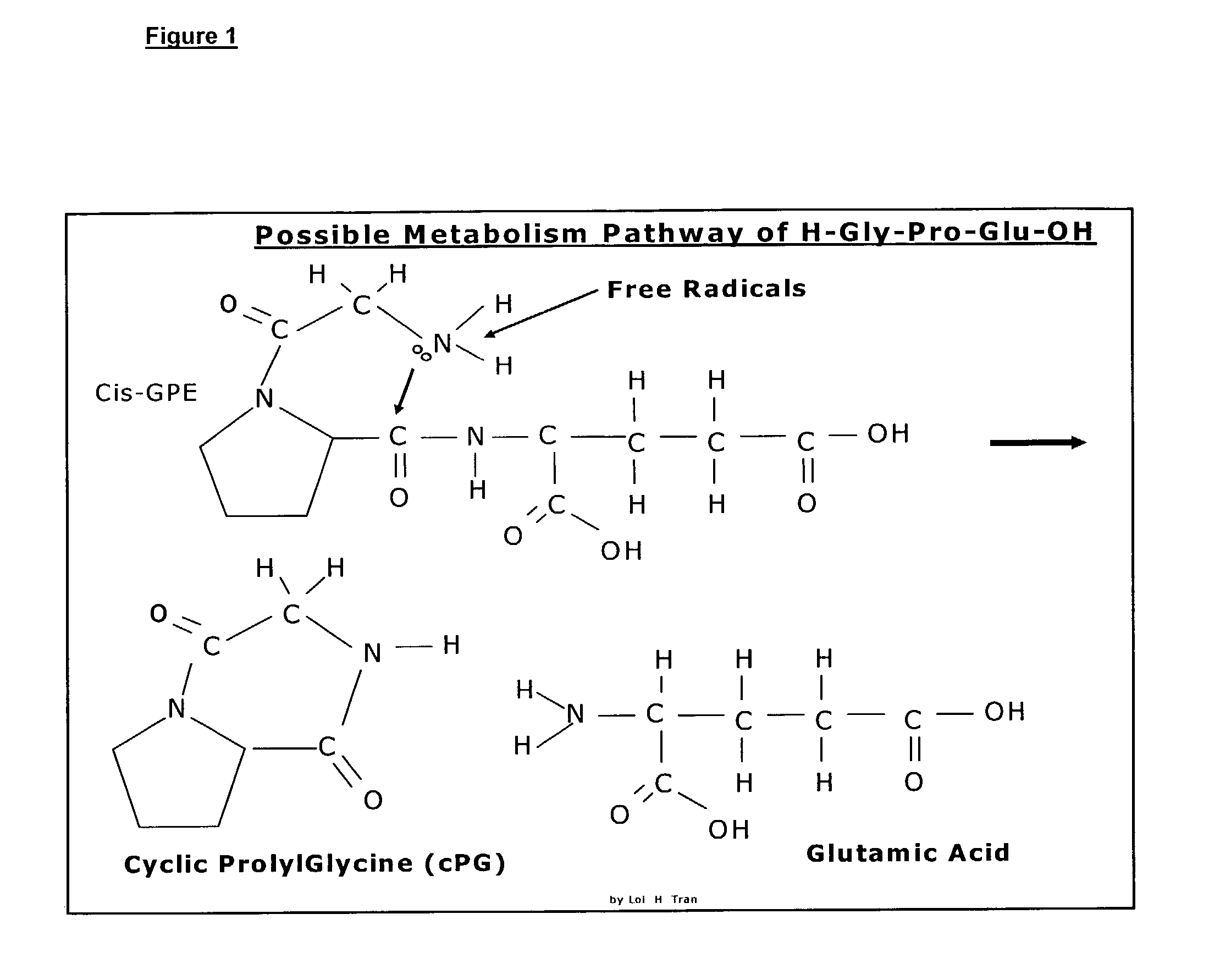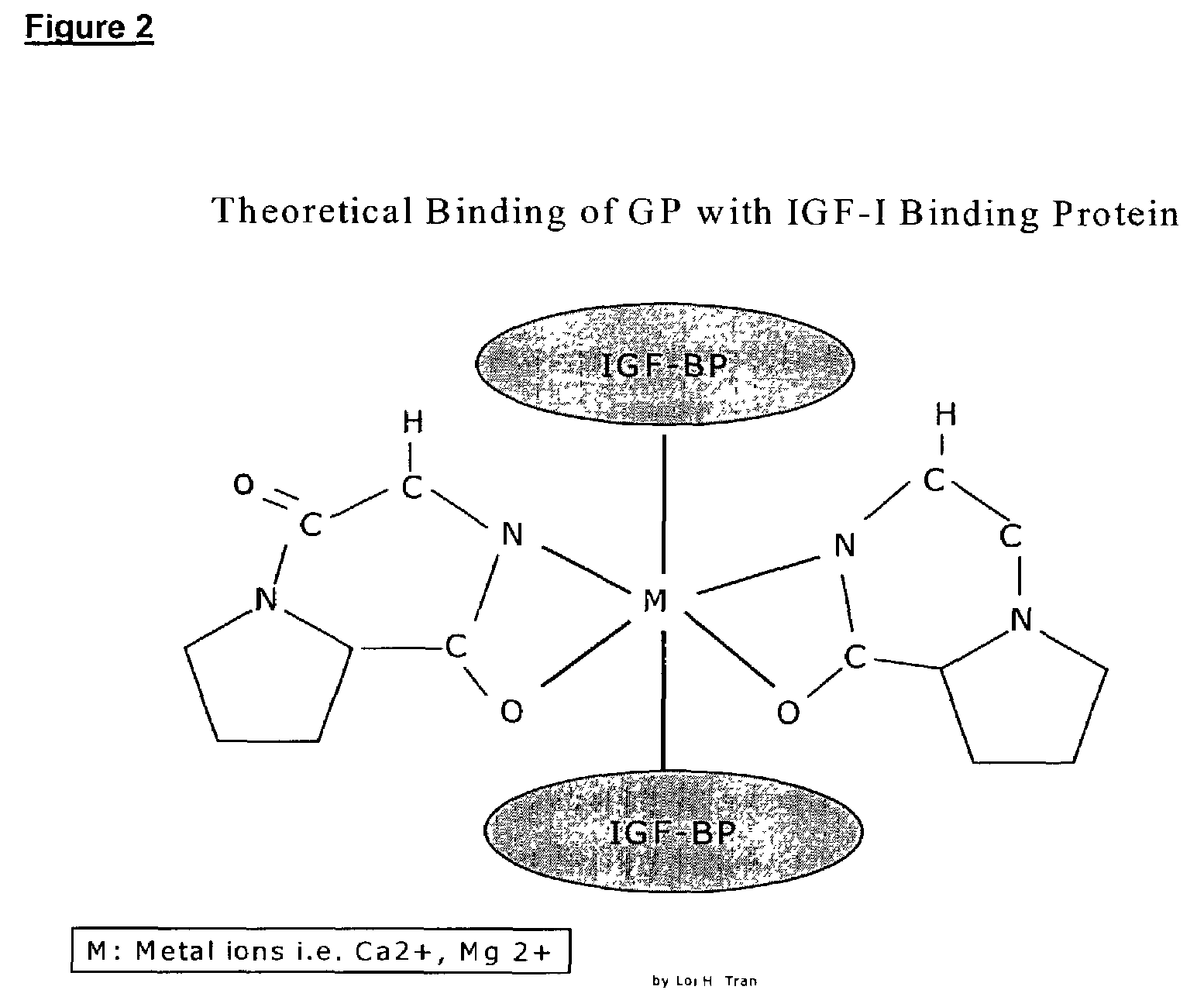Neuroprotection and neuroegenisis by administering cyclic prolyl glycine
- Summary
- Abstract
- Description
- Claims
- Application Information
AI Technical Summary
Benefits of technology
Problems solved by technology
Method used
Image
Examples
experiment 1
[0094]Cyclic PG prevents glutamate induced neuronal death in vitro in a dose related manner.
Materials and Methods:
Cerebellar Cell Culture Preparing and Coating of Cover Slips
[0095]Ten coverslips were placed into a large petri dish and washed in 70% alcohol for 5 minutes, then washed with Millipore H2O. The coverslips were air dried, then coated with Poly-D-Lysine (1 mg / ml stock solution in PBS, 90-100 μl) and incubated for 2 hours at 34 C.
Extraction
[0096]Postnatal day 4 Wistar rats were used for the study. Rats were placed in ice for 1 minute, the heads were decapitated and the cerebellum removed on ice. Cerebellum tissue was placed in 1 ml of 0.65% glucose supplemented PBS (10 μl 65% stock D (+)glucose / 1 ml PBS) in a large petri dish, chopped up into smaller sections and triturate with a 1 ml insulin syringe via a 23 G (0.4 mm) needle, and then squirted back into the glucose solution on the large petri dish. The tissue was sieved through (125 μm pore size gaze) and centrifuged (2 m...
experiment 2
[0103]Effects of cPG after 6-OHDA induced nigral-striatal lesion.
Materials and Methods
[0104]Twenty male Wistar rats (280-310 g) were used. After exposing the skull, 6-OHDA (8 μg in a base of 2 μl 0.9% saline containing 1% ascorbic acid) was administered into the right medial forebrain bundle (MFB) using co-ordinates AP +4.7 mm, R 1.6 mmv-8 mm under 3% halothane anaesthesia. 6-OHDA was injected through a 25 G needle connected via a polyethylene catheter to a 100 μl Hamilton syringe. The 6-OHDA was infused by a microdialysis infusion pump at a rate of 0.5 μl / min. The needle was left in the brain for a further 3 minutes before being slowly withdrawn. The skin was sutured with 2.0 silk and the rats were allowed to recover from anaesthesia. The rats were housed in a holding room with free access to food and water at all times except during behavioural testing.
[0105]Cyclic PG was dissolved in saline. Four different doses of cPG (0, 0.1 0.5 1 mg / kg, Bachem) were administered intraperitonea...
PUM
| Property | Measurement | Unit |
|---|---|---|
| Dimensionless property | aaaaa | aaaaa |
| Body weight | aaaaa | aaaaa |
Abstract
Description
Claims
Application Information
 Login to View More
Login to View More - R&D
- Intellectual Property
- Life Sciences
- Materials
- Tech Scout
- Unparalleled Data Quality
- Higher Quality Content
- 60% Fewer Hallucinations
Browse by: Latest US Patents, China's latest patents, Technical Efficacy Thesaurus, Application Domain, Technology Topic, Popular Technical Reports.
© 2025 PatSnap. All rights reserved.Legal|Privacy policy|Modern Slavery Act Transparency Statement|Sitemap|About US| Contact US: help@patsnap.com



